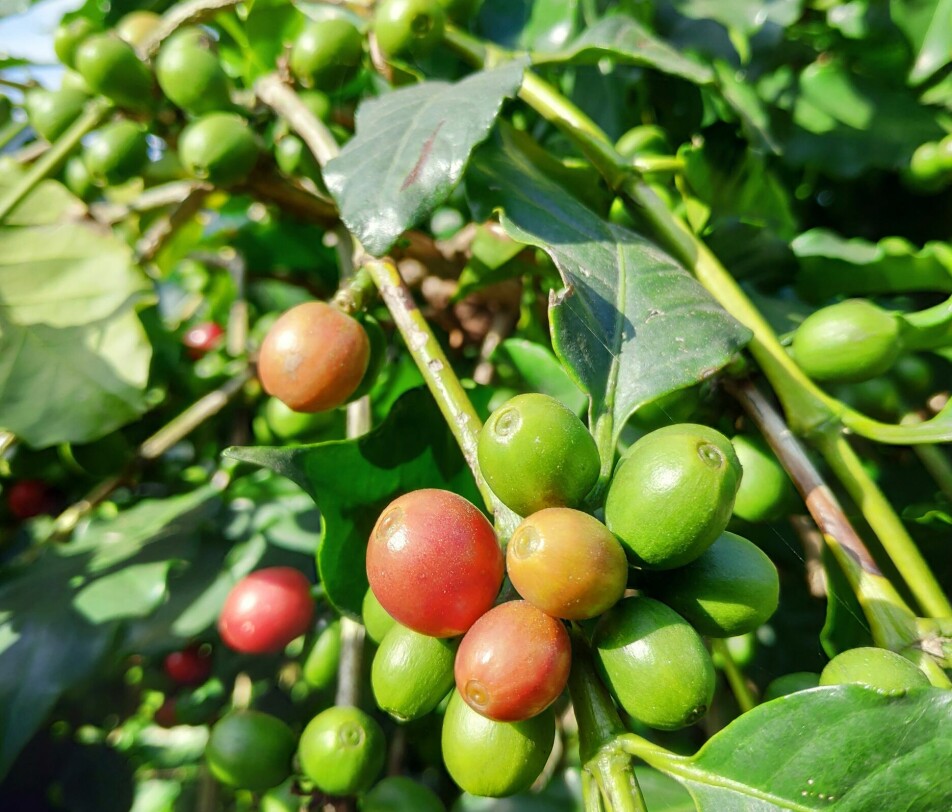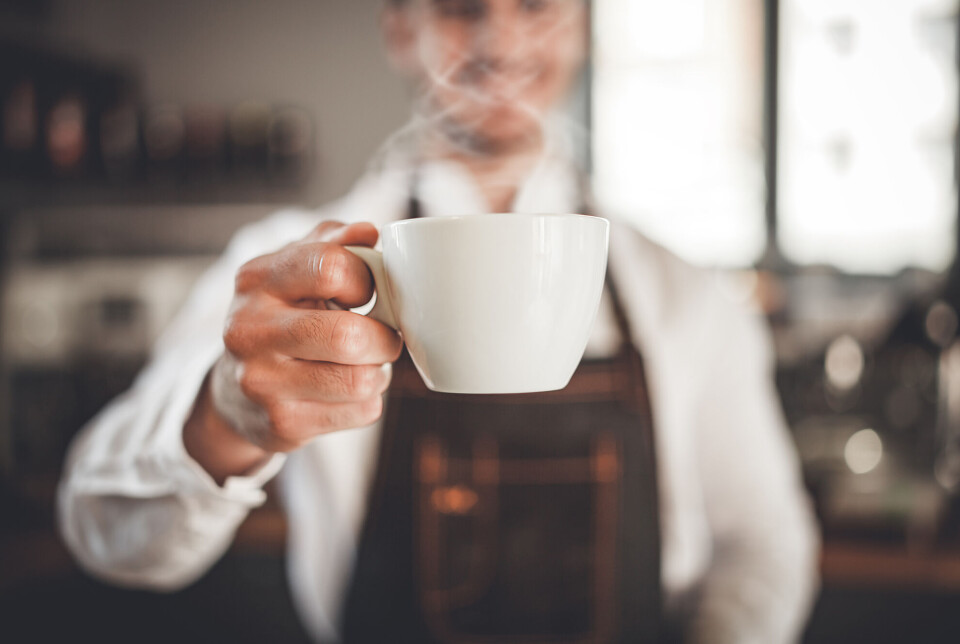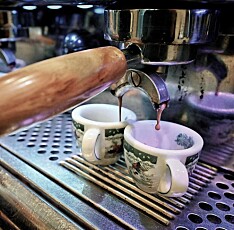
Why do we drink coffee in the morning?
In the past, people drank beer and spirits for breakfast.
Martin Thelle Backer (22) is a student at the Norwegian University of Life Sciences (NMBU) in Ås. He drinks coffee every morning.
“Coffee is good. I get energized,” he says to sciencenorway.no.
“I don't drink coffee for breakfast, but make two cups of coffee that I take with me to school. I drink the coffee there straight away,” Martin said.
His habits are typical. The first cup of coffee in the morning is the most important for most people, according to a survey conducted by the coffee industry.
Seventy-four per cent of people over the age of 18 drink coffee every day. Martin does not drink more than the two cups.
“It’s too expensive to buy coffee in the canteen,” he says.
That’s not so typical. Martin drinks less than most Norwegians. The average consumption in Norway is five-and-a-half cups every day.
Martin drinks his coffee without milk. This is the most common way, but women and young people more often have milk in their coffee.

A trend for the wealthy
Coffee beans grow on trees in countries with hot and humid weather. In other words - they don't grow in Norway.
Coffee came to Norway 300 years ago.
Doctors, priests, historians and others travelled around Norway in the old days. They wrote letters and books about the traditions and eating habits they saw. Today's historians have also studied these old eating habits.
In the 18th century, coffee beans and coffee drinking begin to appear in stories from everyday life.
The rich started the trend of drinking coffee, most often in the morning.
The Norwegian socialite and writer Conradine Dunker was born in the year 1780. She wrote about her childhood in a well-off family, where they were served coffee for breakfast.
Drinking coffee spread from rich families in the city to everyone in the city. Dunker wrote that their servants were given coffee every Sunday and Wednesday.
Beginning in 1800, however, more and more shiploads of coffee beans came to Norway.
That resulted in the spread of coffee drinking around the country.

From medicine to holidays to every day
Many rural residents were skeptical of the new drink. A priest wrote in the newspaper in 1821 that coffee was not common where he lived in Hardanger in western Norway. It happened that people drank coffee, but then as medicine. Another priest believed that the farmers were afraid of coffee.
But the coffee trend was unstoppable.
At first people drank a cup of coffee on major holidays. It then became common to drink coffee on Sunday mornings. Then it was every morning, and then many cups every day.
What did they drink in Norway before coffee arrived?
Coffee has a fairly short history in Norway, but beer has always been here. One thousand years ago there was even a law that required all farmers to brew beer. In the Viking Age, beer may have been the most common drink.
In the morning they drank warm beer or ‘beer cheese’, which is a mixture of beer and milk. Children also drank beer.
Eventually, people began to distil spirits, which they liked to drink with their meals. Two hundred years ago it was not uncommon to have a morning shot for breakfast.
Eventually, both politicians and medical professionals became concerned. People got drunk on beer and liquor. They could injure themselves and others, and it affected their health. The authorities put taxes on alcohol, and for a period it was completely banned.
Coffee, on the other hand, could be consumed morning, noon and night.

Healthy or unhealthy?
Many researchers have looked into the question of whether coffee is healthy or unhealthy. Often their results do not fully agree, perhaps because they measure different things. Some have investigated whether there are harmful substances in coffee. Others have checked the effect coffee has on different parts of the body.
Four years ago there was a large study on the effects of drinking coffee. The English researchers assessed the research that had been done before. They found that coffee in moderate amounts is more positive for our health than negative.
The recommendation is that people consume no more than three to four cups of coffee a day.
Other researchers believe you can drink even more. Studies show that coffee makes you concentrate better, refreshes you, can lead you to live longer and has a beneficial effect on a number of diseases.
If you drink too much coffee, you can get heart palpitations and an upset stomach.
A coffee headache
If you are used to drinking coffee, but abstain for a day, you can develop headaches and body aches.
Martin hasn’t experienced this himself.
“But a day without coffee is not as productive. My concentration isn’t as good if I don't drink coffee in the morning,” he says.
A cup of coffee is invigorating in the morning, because it contains caffeine.
This drug works on your brain. You become less tired and more alert. We need that in the morning.
Sometimes Martin drinks coffee to stay awake.
“When I have an exam, I drink coffee in the evening. Especially when I have to stay up for a long time to read or write,” he says.
Some people cannot sleep if they drink coffee too late in the day. That's because the effect of caffeine in the body can persist, sometimes for a very long time. Usually the effect wears off after five hours, but it takes longer for some people - as much as 10 to 15 hours.
Martin is not one of them. He easily falls asleep, even if he drinks coffee in the evening.
Translated by Nancy Bazilchuk
References:
Coffee survey 2022, (in Norwegian) Norsk Kaffeinformasjon (Norwegian coffee information).
Annechen Bahr Bugge: Fattigmenn, tilslørte bondepiker og rike riddere. (Fried crullers, apple brown betty and French toast) Food and eating habits in Norway from the 16th century to the present day. Cappelen Damm, 2019. (Summary in Norwegian)
———
Read the Norwegian version of this article at forskning.no


































